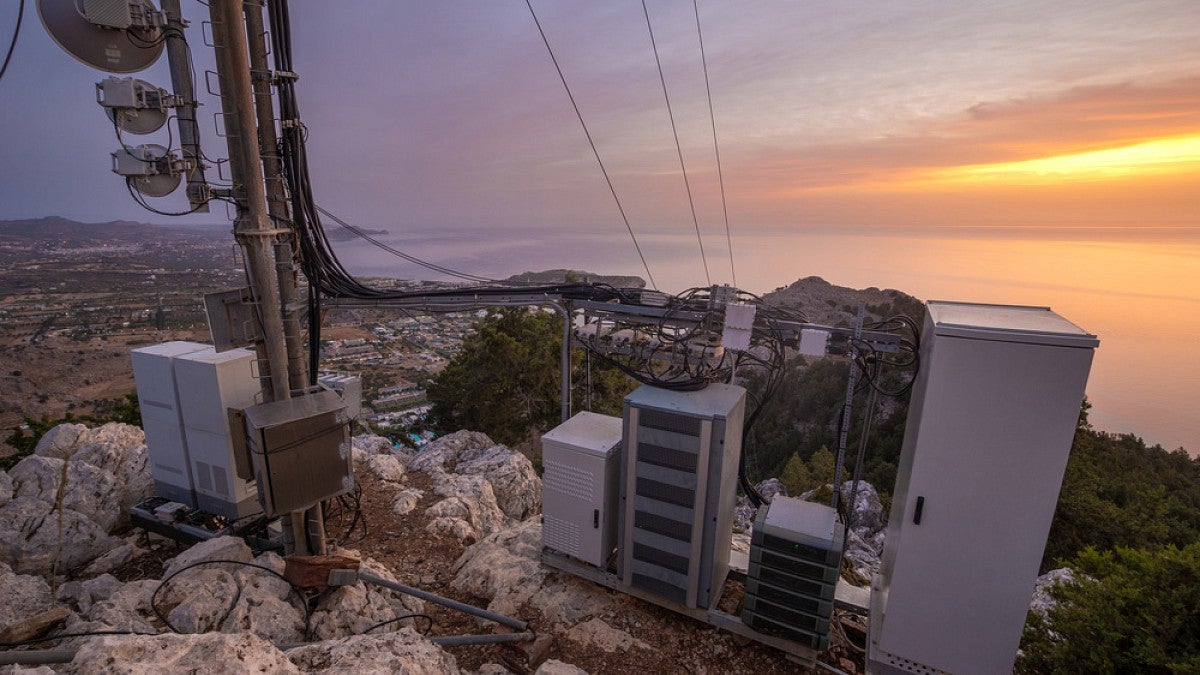University of Oregon research inspired by an undergraduate has uncovered a communications hazard that could accompany earthquakes along the Cascadia subduction zone: Internet traffic and cell signaling facilities could be crippled.
A project led by Juno Mayer, a computer science student, estimates that 65 percent of fiber links and cell towers, especially between Portland and Seattle, are at risk in the next 50 years. Scientists currently project about a 10 percent chance of a magnitude 9-plus earthquake in the Pacific Northwest during that time.
Some 47 percent of international internet traffic connects to the Pacific Northwest through submarine cables. Associated land infrastructures include landing points for the cables, data centers, internet exchange points, cell towers and fiber-optic cables.
“It is time for action. There are a number of cascading hazards that could occur with an earthquake, such as landslides, flooding and a tsunami,” said Mayer’s adviser, Ramakrishnan “Ram” Durairajan, an assistant professor in the Department of Computer and Information Science.
“We need researchers, internet service providers, network operators, field technicians and regional governments to come together and be willing to share information to build resiliency,” he said. “This is a multistakeholder problem.”
Most of infrastructure deployments, he noted, belong to competing companies and are often considered proprietary.
Mayer and Durairajan collaborated with UO seismologists Emilie Hooft, Doug Toomey and Valerie Sahakian. Mayer presented the work virtually to this year’s Passive and Active Measurement Conference hosted by Germany’s Brandenburg University of Technology in late March. The annual event brings together researchers and operators to discuss emerging work in network measurement and analysis.
The research, published in the conference’s proceedings, unveiled ShakeNet, a probability-based framework based on a geographic information system approach. It provides a strategy to categorize risks and plan for emergency rerouting of internet traffic.
In the study, Mayer examined 59 co-location facilities, 422 internet access points, four internet-exchange points, 31 data centers, 213,554 cell towers and 42,516 miles of long- and short-haul fiber and submarine cables that terminate in California, Oregon and Washington.
“A recent news article said that if Cascadia were to rupture today everything west of I-5 would be toast,” Durairajan said, referring to a 2015 New Yorker magazine story. “Imagine the impact on our internet infrastructure. The problem could be even worse. We have internet traffic along the West Coast going to and from other countries, and all of them could be impacted.”
Rather than directly assessing outages that could occur at any given earthquake magnitude, the research provides a baseline view of risks, he said. Future research will aim to make ShakeNet more robust in its analytic power, he added.
Hooft, Sahakian and Toomey, all researchers in the Department of Earth Sciences, provided Mayer with earthquake shaking computations and data. They also discussed ways to integrate both potential seismic shaking levels and earthquake early warnings with Mayer and Durairajan’s data on communications infrastructure in the region.
“I was amazed to find out how vulnerable our internet infrastructures are, specifically given how heavily we depend on them in modern times,” Sahakian said. “We can all take individual actions to prepare ourselves for the next large event, but at some point, we need to rely on legislation, systems and policies that can make us less vulnerable.”
This research, she said, could lead to a more resilient internet, before and after a quake.
“If we know that shaking will damage certain fibers, can we make pre-canned plans to reroute internet traffic? Sahakian asked. “This will not only help with transmitting essential information and resources to and from communities in need after the earthquake but also improve our chances of bouncing back faster by maintaining functionality of the internet as critical infrastructure.”
Mayer, who grew up in Hawaii, proposed the project while enrolled in Durairajan’s introductory course on software engineering.
“I wanted to work on research that had an impact and real-world implications,” said Mayer, who completed his coursework winter term for a bachelor’s degree in computer science. “Getting to work with physical internet topology data and earthquake prediction data fulfilled these goals.”
In addition to collaborating with seismologists, Mayer also got his first experience in internet measurement and infrastructure. The project had him working within the Oregon Networking Research Group, based in the computer science department. For his efforts, he earned honorable mention for the Computing Research Association’s Outstanding Undergraduate Researcher Award.
“I left the project with a newfound appreciation of engineering and systems that keep us connected at a global scale,” he said. “Through this project I also learned and applied probabilistic analysis and geospatial data analysis methods. Thanks to Ram's fantastic mentoring, I greatly improved my scientific writing and feel confident about my ability to author papers and conduct my own research should I choose to attend grad school.”
Mayer’s efforts, Durairajan said, were amazing.
“Juno, to his credit, looked at the problems, identified the issues and came up with mitigation strategies, which is incredible for an undergraduate student to do,” he said.
Mayer currently is working remotely from his Eugene home for a New Jersey-based software engineering firm.
—By Jim Barlow, University Communications


